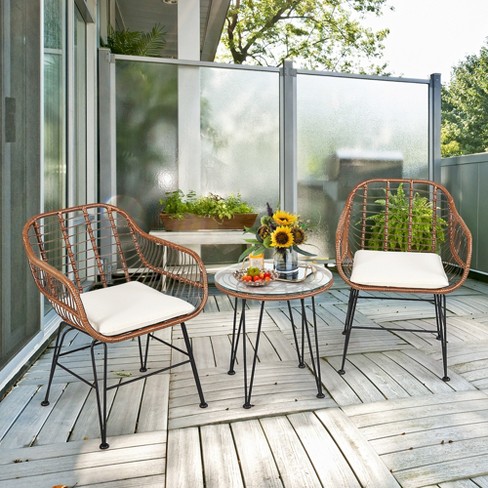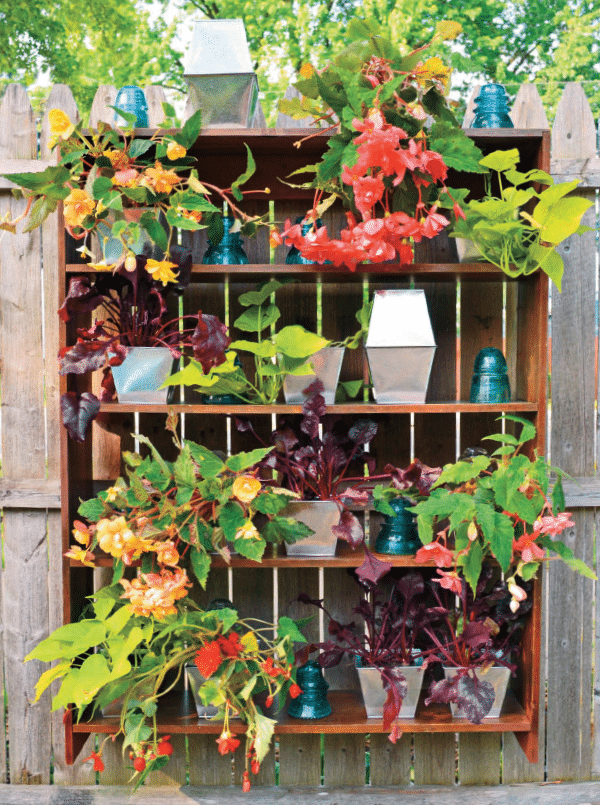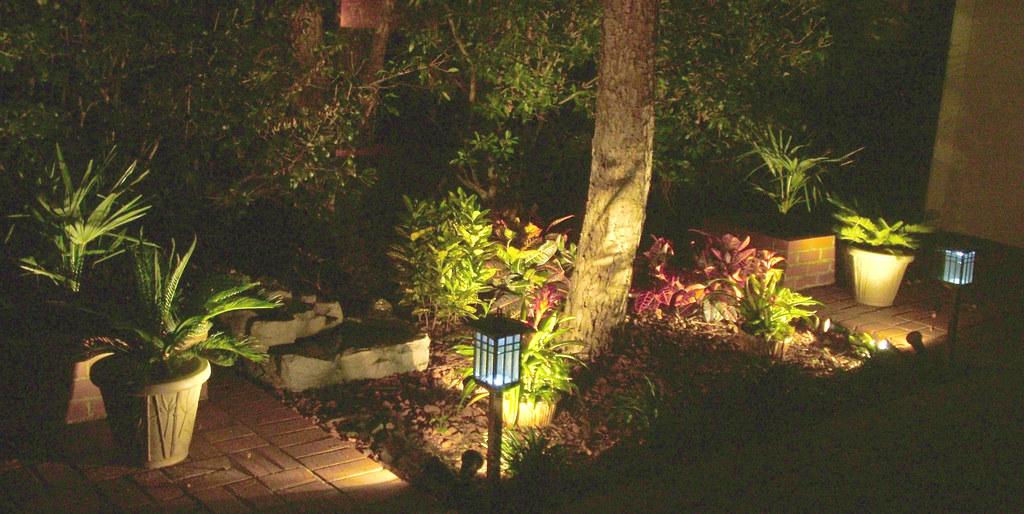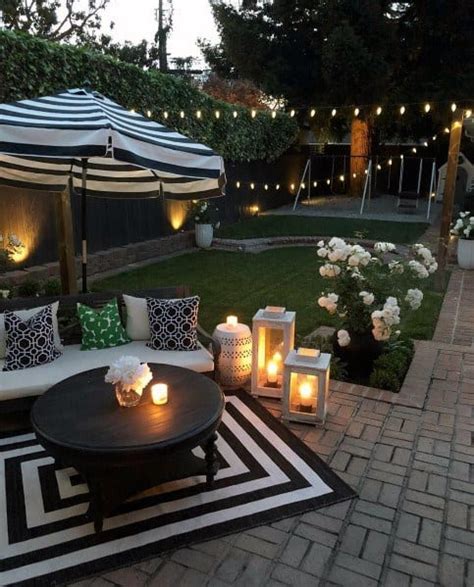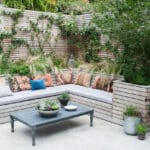| Getting your Trinity Audio player ready... |
Great outdoor living space – which is essentially real estate and design speak for a nice yard, deck, patio or balcony – is very high on a lot of people’s want lists these days, as spending more time at home has become the norm.
As nice as it would be if we could all have the kind of large outdoor living space that you see in all the glossy home decor magazines for many people, that is simply not the case. So does that mean that you can’t have a great looking but functional outdoor space to relax, entertain or just soak up the sun?
Not at all. Having a small outdoor space does not have to mean that you cannot create a very attractive and functional one – even if you only have a simple balcony to work with or a postage stamp sized patch of lawn.
Creating a workable small outdoor living space does require a bit of planning and imagination, but it is perfectly possible to create a magazine worthy look. Here are a few tips:
For a Very Small Lawn
If you only have a small patch of lawn it can be hard to see how you can create a great outdoor living space and the temptation can be to just give up and set a lounger or two outside when the sun comes out and be done with it.
However, the construction of a simple patio can be a great solution in this case. A patio is a great way to designate an outdoor living area without having to do a lot of construction or even spend a great deal of money.
There are a number off different patio material choices you can choose from. Stone pavers are a common choice, but ceramic tile is also just as durable and thanks to all the different colors and patterns that even outdoor grade ceramic tile can be found in you can really create a very unique ‘floor’ for your patio that is a real showstopper. Other great choices include gravel and concrete.
Seating Solutions
One of the best seating and dining solutions for a small patio is a bistro set which is a space saver while still being a very practical way to dine. Choosing a wrought iron version means you will be making a very durable choice, and although they may cost a little more than plastic furniture upfront the investment tends to pay off in the long run, and look a lot nicer as well.
If you want to be able to cook outdoors the standard large BBQ will probably be too big for a small patio. Instead, you could invest in a portable fire pit. These days they come in a wide range of styles, you can find them in gas burning and wood burning models, as a roaring fire is hardly balcony friendly!
These offer a cooking experience that is rather different, but on that can still be a lot of fun!
For a Balcony or Small Terrace
For many smaller homes or even apartment and condo owners the idea of having a balcony or terrace sounds good, but then knowing quite what to do with it can be tough.
To make the most of this kind of space as a center for outdoor living, thinking smaller and portable is a must. Small café style two-seater bistro tables work very well on a balcony and if you have the space you can always opt to add two – or even three – to create your own version of a street café and a great place to sit with a cup of coffee (or a glass of wine) and relax.
To add some natural color to your balcony space for a more ‘garden like’ vibe choose pot plants that are bright but also easy to take care of, reasonably hardy and that can be moved indoors if the weather turns very cold and nasty.
Alternately you can choose to become a real container gardener and use your outdoor balcony space to grow edible goodies like herbs or container friendly fruits and veggies like tomatoes, peppers and strawberries, plants which all tend to do well on a reasonably sunlit balcony or terrace, stage up beautifully and even help you cut your food budget a little!
When placing plants and greenery, don’t forget that in a small space, sometimes going up works best! Vertical gardens can be trained to grow up trellises and potted plants can be placed on shelves – old bookcases can work very well, especially if you like the shabby chic look.
Lighting for Small Outdoor Spaces
A little goes a long way when it comes to lighting your smaller outdoor space. This is because your eyes require less light to see light, shadow, and pattern outside than they do indoors.
Certain lighting principles, however, apply both indoors and outdoors.
For starters, light has two properties: intensity (the amount of energy emitted) and color. The color of a lightbulb can be found on the packaging; it’s a number that ranges from 1800 kelvins (K) for a very red tone to 7500 K for a bluish-white tone.
Lighting is generally divided into three layers based on function, whether indoors or outdoors:
- Overall lighting: This type of lighting illuminates an entire room or space.
- Task Lighting: Task lighting is designed to serve a specific purpose, such as illuminating a path.
- Accent Lighting: This is used to draw attention to a specific object or area. Spotlights or floodlights are commonly used for this.
Outdoor light fixtures can use a variety of lightbulbs.
- Incandescent bulbs produce a pleasing light but have a short life span and use more energy.
- Halogen bulbs are more energy efficient than incandescent bulbs, with a longer lifespan and lower energy consumption.
- Fluorescent bulbs now come in a wider range of colors, last much longer, and use significantly less energy.
- While LED landscape lighting is more expensive, the lightbulb costs (which are decreasing) are offset by their extremely long life and low energy consumption.
Landscape lights that are close to an electrically powered structure can be easily integrated into your home’s wiring system. Another option for an environmentally friendly way to power your outdoor lights is solar landscape lighting.
Too much light, or poorly installed lighting, can create unwanted light pollution that shines into indoor rooms, washes out the view of the stars, creates glare that temporarily blinds people, and wastes energy and money. Follow these tips to avoid excess light pollution from your landscape lighting:
- Aim lights carefully. Position lights at night and check their position frequently.
- Shield bulbs. Use fixtures that have reflectors and shielding to concentrate light where you want it.
- Minimize wattage. Higher wattage will create harsher light without improving aesthetics or increasing safety. Low-wattage bulbs are often enough to provide illumination.
- Control the light. Separately zoned lights with timers, controls, dimmers, or motion sensors will turn on lights only when needed or enable them to be turned down as necessary.
Need help designing and creating a great outdoor space for your Houston home? Just Oragnized by Taya’s design team can help. Book a free 15-minute Zoom call today to chat about just how we can help you!
- Yes, You Can Have an Organized Home with Small Children - October 30, 2025
- Creating a Holiday Command Center: Festive Organization Made Easier - October 28, 2025
- Pro Organizer Tricks for Treating: Your Ultimate Halloween Night Strategy - October 23, 2025




